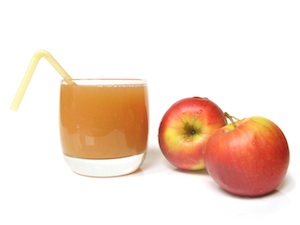The Role of Nutrition in Combatting Lower Back Pain
Have you ever thought of seeing a Naturopath for that lower back pain?
Whether it’s a dull ache, a burning sensation or a sharp pain, back ache is something that that affects millions of Australians every single day. While many people will regularly see chiropractors, osteopaths and massage therapists; or, take comfort in wheat bags, hot water bottles, and creams or lotions; often long lasting, true relief requires looking at things from the inside out.
In this article our Naturopath shares some of the dietary and nutritional keys that can reduce and eliminate your lower back pain.
Can Diet Really Reduce Back and Joint Pain?
Combatting back and joint pain nutritionally means providing the right raw ingredients, at the right time.
We get asked this question every day, and the answer is one word. Absolutely
The foods we eat are more than just sources of energy. Every mineral, every vitamin found in our food is used by the body in huge numbers of far reaching reactions and to manufacture bones, muscles, lubricating fluids and nerves. This can all only occur when our body has sufficient levels of the raw materials needed.
Combatting back and joint pain nutritionally means providing our body with these raw materials. Obtained either directly from the diet, or in cases of established deficiency from supplements, our body can use these to rebuild and repair.
Our Top 3 Nutrients for Back Pain
What nutrients do I need to combat lower back pain? We’re glad you asked. After all, that was exactly what we wanted to cover in this article.
Nutrient 1 – Vitamin C – Not Just Cold and Flu
Most people only think of vitamin C when they have the cold or flu. Vitamin C however, is just as important when it comes to eliminating lower back pain nutritionally. Vitamin C deficiency has been associated with:
- muscle pain and muscle degeneration;
- bone fragility;
- joint pain;
So just why is vitamin C good for back pain? Vitamin C is one of the vital ingredients in the development of what is known as ground substance.** This is what allows cells to form together into the various tissues of the body. This includes the many complex structures of the back and spine such as muscles, tendons, ligaments and intervertebral discs. In short, insufficient vitamin C and our body will not be able to grow and repair these import structures leading to a build up of damage and resulting in pain.
While vitamin C is naturally found in a number of foods guava, papaya, capsicum and rose hips among some of the higher sources, where deficiency symptoms, such as back pain, exist we’re looking for doses of 1000-2000mg per day. A good quality vitamin c supplement is a must, and we’re not talking about the supermarket variety vitamin C supplementation. Track down a good quality, powdered vitamin C supplement for your local health food store or online.
Nutrient 2 – Vitamin D
If you think living in Australia you get enough vitamin D think again. Nearly 70% of our first time clients have vitamin D levels that are medically considered to be deficient, and 100% of our first clients have vitamin D levels that, as Naturopaths, we consider to be deficient.
If you’re vitamin D levels are below 120nmol/L you are increasing your risks of chronic back and joint pain.
While you’re local GP will say that vitamin D levels of 50nmol/L are sufficient, increasing evidence is showing that our baseline vitamin D levels should be in the range of 120nmol/L – 160nmol/L. As clients vitamin D levels decrease we specifically find increasing incidence of:
- osteo and rheumatoid arthritis;
- non specific, muscle aches and pain;
- lower back and joint pain;
- osteoporosis;
If you are affected by lower back and joint pain and not taking a vitamin D supplement consider taking one. If you’re worried about taking too much, don’t be! Medical researchers, from fields including: cancer research, rheumatology and immunology have suggested the current RDI’s is far too low. Evidence from trials shows no adverse affects from supplemental Vitamin D intake as high as 10,000 IU per day.
Nutrient 3 – Essential Fatty Acids
Otherwise known as fish oils, essential fatty acids is a regular in our top list of nutrients due to the many function these fats have in our bodies.
In helping to prevent lower back and joint pain, fish oil has two major affects of interest. Firstly, they work as an exceptionally powerful anti inflammatory. We all know that long use of pain killers and anti-inflammatories isn’t good for us. In addition to gastro intestinal upsets and damage, frequent anti-inflammatory use is like putting masking tape over the warning light on the dashboard, the light doesn’t bother us any more, but the problem is still there .
If the doctor has just put you on one NSAID after another, then take a look at a therapeutic fish oil dose as an anti-inflammatory without the side effects.
In addition to their benefit in the acute stages of back injury or pain, essential fatty acids also play a valuable role in the rebuilding and repair of damaged tissues. Essential fatty acids are a vitally important component of cell walls, this includes the cells in cartilage, bone, ligaments and tendons. Insufficient, fatty acids and our body will not be able to rebuild these damaged tissues and repair.
It is important to use a high strength liquid fish oil. Once a day capsules available from the supermarket or chemist do not contain high enough concentrations of the active ingredients EPA and DHA. We recommend up to 2g per day, particularly for acute back injury and pain.
So What Are You Waiting For?
Do you want freedom from back and joint pain? Email us today on info@www.passion4health.com.au!
Many of our clients have seen improvements back and joint pain in as little as ten days. Safely and naturally, alternative medicine can help you to break free of pain without side effects and toxic chemicals.

